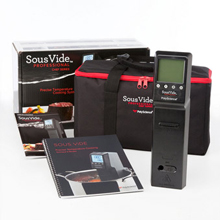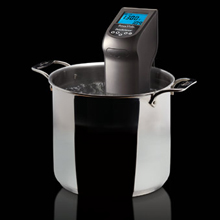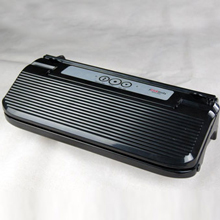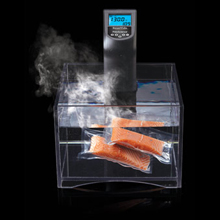Vacuum
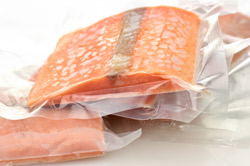 Vacuum
Vacuum sealing is used in the process of sous vide cooking to remove air from the cooking pouch. In a commercial kitchen this is usually done with a chamber vacuum sealer which creates a low pressure environment in and around the bag during the sealing process. This prevents liquids from being sucked from the bag. A non-chamber household vacuum sealer creates a low pressure zone only at the opening of the bag, resulting in suction that will remove not only air but also liquids from the bag.
Vacuum
Vacuum sealing is used in the process of sous vide cooking to remove air from the cooking pouch. In a commercial kitchen this is usually done with a chamber vacuum sealer which creates a low pressure environment in and around the bag during the sealing process. This prevents liquids from being sucked from the bag. A non-chamber household vacuum sealer creates a low pressure zone only at the opening of the bag, resulting in suction that will remove not only air but also liquids from the bag.
Another use of vacuum sealers is to seal food with the intent of preserving flavor, color and aroma. By storing food in an air-free environment, the oxidation process is minimized. It is important to consider food safety aspects as some bacteria can thrive without oxygen. As with any cooking method, it is critical to observe proper food handling protocols and storage temperatures.
An awareness of temperature is also important during the process of vacuum sealing. As air pressure decreases the boiling point of liquids will decrease. For example, a cup of water will boil and evaporate at room temperature under vacuum. This means that if your chicken is not cool when vacuum sealing, liquid in surface cells will boil, causing cells to rupture, changing the outer texture.
There are other interesting ways to use a chamber vacuum sealer in the kitchen. For example removing air from porous foods like watermelon creates a dense, almost meaty texture. Adding additional liquid to the bag, for example pineapple juice, will rapidly infuse that flavor into the watermelon being sealed. You can also take advantage of this rapid infusion process to quickly pickle vegetables.


